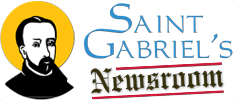The Propers of Mass
I am working on a plan to integrate the propers into Masses at our chapel.
We are at a point where for the past couple of years we have frequently been without an accompanist of any sort. The choir has also shrunk down to the point where there may be only one person leading music on a given Sunday.
I am working on a plan to integrate the propers into Masses at our chapel.
We are at a point where for the past couple of years we have frequently been without an accompanist of any sort. The choir has also shrunk down to the point where there may be only one person leading music on a given Sunday.
The more that I have been studying liturgy, the more I realized that chant would be a great addition to our music repertoire. Chant is, in fact to be given “pride of place” in Western liturgies. The sad fact is that many parishes never chant at all.
When our long-time music leader retired, and there was no one to replace her, I decided it was time to chant.
Now what? Chant looks rather different than the music many of us have been taught. It has a four-line staff, and square notes. It has no sharps or flats. There is no treble clef.
The four line staff predates standard music notation. Gregorian chant is what was used in Catholic liturgy for hundreds of years. It is designed for voices, not instruments, so it has an advantage for singers who may not be accompanied.
Chants that people may be readily familiar with are Salve Regina, or Pange Lingua, chanted on Holy Thursday. There are chants that may be used during the Mass, even in English.
But what are the propers?
The propers are scriptural passages which follow the liturgical calendar, just as the readings, the psalm and the gospel do. They fall where the entrance song, the offertory song and the communion song would most often go. Propers consist of a refrain and verses. The last verse for the entrance (Introit) and communion propers is the doxology.
Why would we want to do the propers?
The propers introduce more scripture into the Mass in a way that songs frequently do not. Looking at the General Instruction of the Roman Missal (GIRM) we see that there is more than one way to provide music for Mass:
The Entrance 47. When the people are gathered, and as the Priest enters with the Deacon and ministers, the Entrance Chant begins. Its purpose is to open the celebration, foster the unity of those who have been gathered, introduce their thoughts to the mystery of the liturgical time or festivity, and accompany the procession of the Priest and ministers. 48. This chant is sung alternately by the choir and the people or similarly by a cantor and the people, or entirely by the people, or by the choir alone. In the dioceses of Canada the Entrance Chant may be chosen from among the following: the antiphon with its (footnote removed) Psalm from the Graduale Romanum or the Graduale Simplex, or another chant that is suited to the sacred action, the day, or the time of year, and whose text has been approved by the Conference of Bishops of Canada. If there is no singing at the Entrance, the antiphon given in the Missal is recited either by the faithful, or by some of them, or by a reader; otherwise, it is recited by the Priest himself, who may even adapt it as an introductory explanation (cf. no. 31).
This quotation is taken from the website: https://www.peterboroughdiocese.org/newmissal/girm.pdf
The propers are the “antiphon and its Psalm from the Graduale Romanum or the Graduale Simplex”
This is the first choice in the list, and yet it is seldom used.
Propers do not have to be done a capella, but settings such as Simple English Propers, by Adam Bartlett (Church Music Association of America, 2011) are written to be chanted unaccompanied.
We are introducing them slowly. For learning purposes and to ease stress on the choir members, we are learning only two seasonal, communion chants, before Advent. During the season of Advent, we will learn another. Eventually, we will learn the propers for each Sunday, but I am not rushing that. None of us are very familiar with chant itself, and we’re learning that, too.
We have a fairly strong repertoire of hymns and songs built up, but we now are without keyboard accompaniment, so some songs will not be suitable for our current circumstances. The propers can stand alone, in place of songs and hymns, or they can be used with hymns, in places where processions are long.
There are some very good resources now available for people wanting to learn more about chant. I would encourage those interested to look up the Church Music Association of America (CMAA) which actively teaches chant in the United States. The Gregorian Institute of Canada / L’Institut grégorien du Canada has an annual colloquium, and encourages research in and practice of Gregorian Chant. Adam Bartlett has produced very accessible books on chant including Simple English Propers and the Lumen Christi Simple Gradual (Illuminare Publications, 2014). There are even apps for Gregorian chant available for both i-phones and android phones.
We in Canada seem to be lagging a bit behind the US in working toward greater familiarity with chant. If trends continue, I think it will once again be given its rightful place in the Mass.
